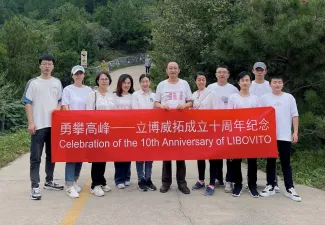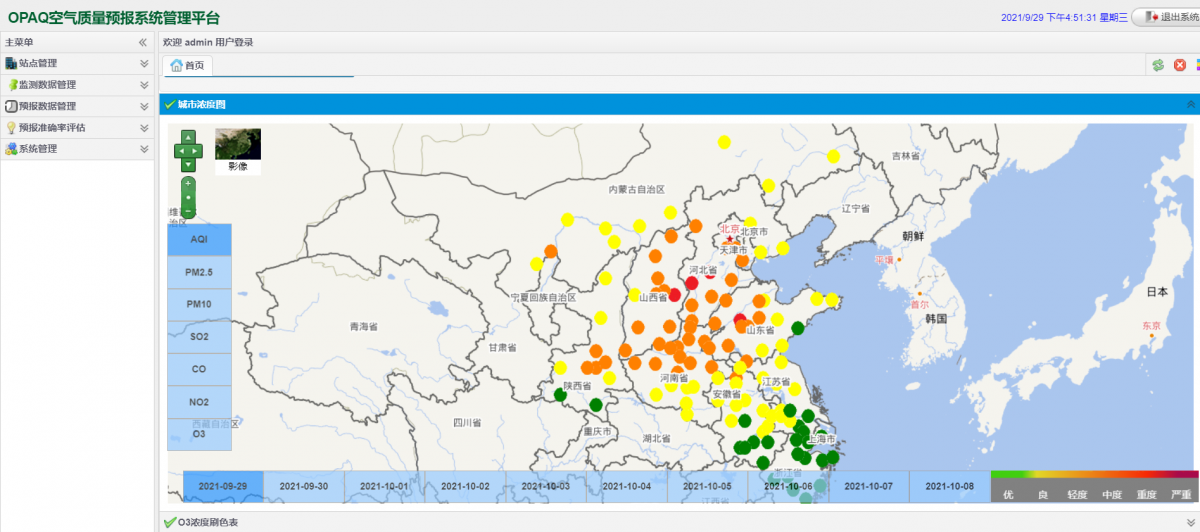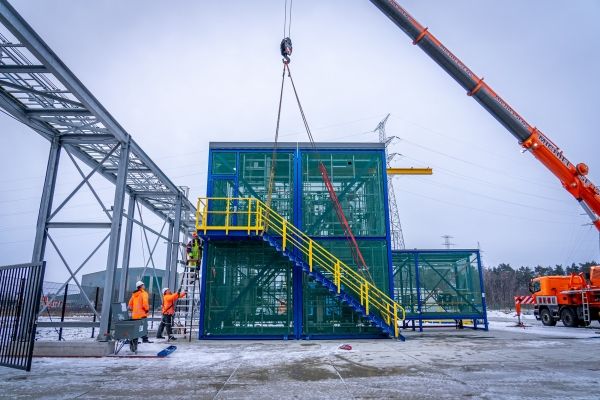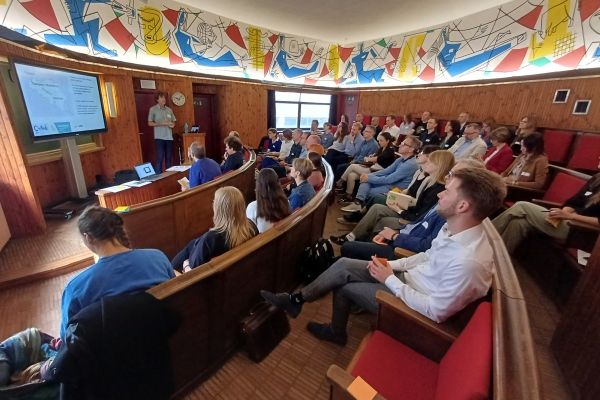LIBOVITO is big in China after 10 years
What began for VITO as a project just here and there, every now and then, has grown into a strong, permanent presence in China. The air there has cleared up massively in the past decade, which is due in part to the air quality models implemented in China via LIBOVITO.

Monitoring air quality and remote sensing
VITO has been active in China since the start of this century, mainly working on monitoring air quality and remote sensing on a project basis. But the Summer Olympics in 2008 switched everything up a gear. As the organiser, Peking was particularly worried about the poor air quality in the city, which was known for its almost permanent smog. Largely also because the eyes of the world would be focused on the Games.
Back then, VITO was a partner in the AMFIC project, a European- Chinese project that was being co-ordinated by the Dutch KNMI (Royal Dutch Meteorological Institute) at the time. ‘In that project, VITO, in collaboration with the other EU partners, provided a daily forecast for the air quality in the city and specifically in and around the Olympic stadium (the famous Bird’s Nest)’, says Mao Debin, Business Development Manager for VITO Asia, from where VITO’s activities in China are run. A special website was set up for those forecasts on which (mainly the athletes) could consult the anticipated ozone and particulate matter concentrations during the Olympic Games.

Valorising air quality models
This assignment also took place on a project basis, namely as part of a broader European project, so it did not involve any more sustainable activities. But VITO’s air quality experts felt they could do far more, not as part of separate projects paid for by Flemish and European money, but more through a permanent presence in China.
‘We decided to change tactics and take our business model more along commercial lines,’ continues Debin. And so it was that LIBOVITO was launched in September 2011, with its original goal being to valorise VITO’s environmental and air quality models – developed in Flanders – in China. LIBOVITO began as a joint venture, with VITO and its Chinese partner Antipollution each holding half of the shares.
LIBOVITO’s commercial approach meant that Chinese clients would call upon its products and services for payment. There were plenty of ups and downs in the first few years, involving trial & error. It was evident that the Flemish and European models could not simply be extrapolated onto China, with its enormous cities on the coast and immense hinterland. Debin: ‘We were confronted with a steep learning curve. For example, we quickly found out that we needed regional models for monitoring and forecasting the particulate matter concentrations, for example. The particulate matter was present across practically the entire country, for example.’
Back to the drawing board
The VITO experts therefore adapted their AURORA model (Air quality modelling in Urban Regions using an Optimal Resolution Approach) to the Chinese reality. This mathematically-driven model can forecast the air quality based on weather and emissions data, comparable to the way a weather forecasting model does so. However, this was not a resounding success, largely because the model was too complex and there was not yet enough input data available, such as from local emissions of particulate matter and other pollutants. ‘We offered AURORA up to 2014, but only two projects arose from that, which was far too few,’ admits Debin. ‘So we went back to the drawing board.’
As it happened, not only the LIBOVITO experts did so, but also those from VITO’s Spatial Environmental Aspects unit in Mol. ‘The unit’s activities were still very much in the research phase at that point,’ says Lisa Blyth of VITO. ‘Step by step, we got to know the market and learned how to turn our models into solutions in the form of products, for example.’ This learning curve did both VITO and LIBOVITO a world of good. They had done their homework when the Chinese government rolled out its major multi-year plan to drastically improve the air quality in 2014.
This plan involved a gigantic investment, and local and regional authorities and businesses were given specific obligations through binding legislation. Finally, there was a clear policy. Debin: ‘Without the government’s ambition, it would have remained difficult for us to sell our products or models. If no-one is obliged to achieve certain objectives, then nothing will change.’
Bullseye
In the meantime, the LIBOVITO experts had learned what made the Chinese stakeholders needed. That meant they had a better idea of what they were lacking, which turned out to be not just technology, but trained staff and know-how to be able to work with it in particular, and of exactly what they needed. Thanks to the experience with AURORA, they now did know what approach would be successful too. This is why OPAQ was introduced, an affordable and reliable forecasting model for air quality that provides information in real-time and also sends out notifications in the event of peaks in pollution, for example. Equipped with this system, local and regional policy-makers could take immediate action to improve the air quality in their city or region. This was not just for particulate matter, but also for nitrogen and sulphur oxides.

It was a bullseye. In the past few years, more than sixty OPAQ projects have been implemented by LIBOVITO in China, with one even at a national level. This has made OPAQ one of the most popular air quality models there today - and by far the most used out of the models of foreign origin. With the model, mainly regional authorities could tackle some of the most polluting areas, such as in the Hebei province, where more than twenty OPAQ projects have been rolled out. The effect on the air quality did not take long to show, and indeed across the country. For example, Peking recorded a drop in the average concentration of particulate matter (PM2.5) of no less than 45 percent between 2015 and 2020. The sulphur dioxide content, largely originating from burning coal, even fell down by 61 percent.
Since then, LIBOVITO has also been working closely with the China National Environmental Monitoring Centre (CNEMC), the government body responsible for monitoring the air quality throughout China and all the forecasts for this. ‘We are currently running a demonstration project with them based on our OPAQ model,’ adds Blyth. ‘Partly so we can forecast the ozone concentrations better, which is currently a priority.’
VITO’s presence in China has also been strengthened. Since 2017, it has been the only shareholder in LIBOVITO, which has an office in Peking and currently employs ten people. LIBOVITO’s Chinese employees regularly come to VITO in Mol for training – or rather, they did before the coronavirus pandemic broke out.
The future
What does the future look like for LIBOVITO, now the Chinese multi-year plan for air quality is coming to an end? ‘In environmental terms, the quality of the air is only the beginning. Afterwards comes the quality of water and of the soil,’ says Debin. So the coming years will also see LIBOVITO helping to improve the water quality in China and everything that goes with it, such as forecasting floods, for example. On top of this, it will be expanding its activities. ‘We are not only focusing on monitoring and forecasting, as the market for products based on water quality is far larger than the one for air quality,’ says Blyth. With that said, LIBOVITO will continue to supply modelling and forecasts for the latter too.









